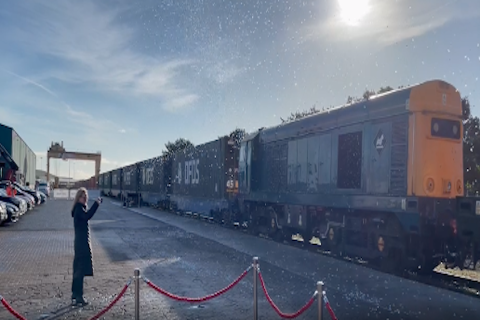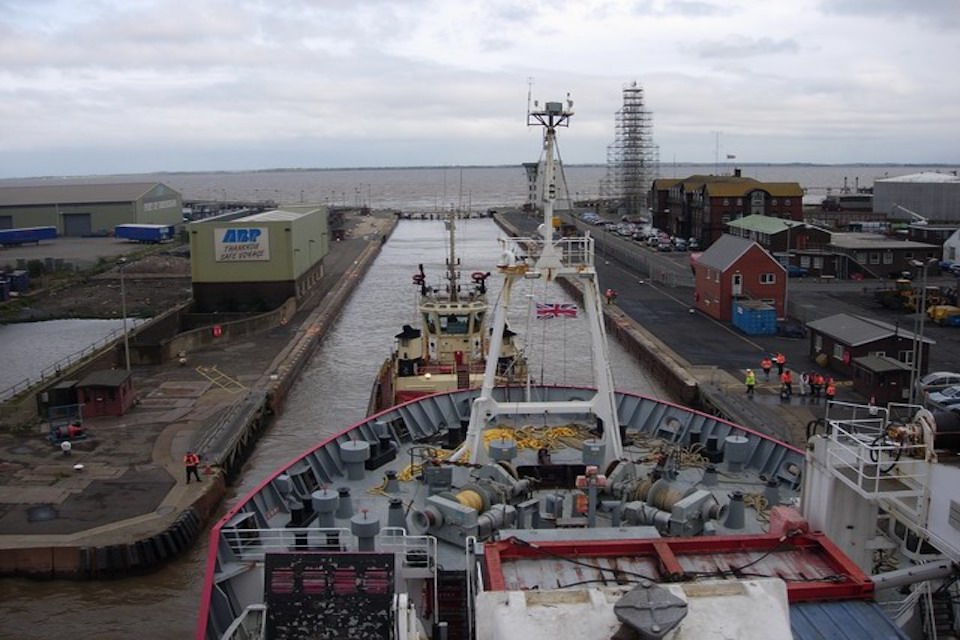
Humber Express connects Immingham and iPort Rail Doncaster
A brand new intermodal freight flow has opened up a link between Britain’s biggest port by tonnage and Britain’s ambitious iPort Rail terminal in Doncaster. The sponsors, shipping company DFDS, say the short rail route provides a long-term answer to the UK’s shortage of heavy goods vehicle drivers. The 50-mile (80 kilometres) working will take over 70 truck movements off the rural roads between the two terminals.
Launched at the end of last week, the new intermodal service, named Humber Express, will connect continental European customers using Immingham with the purpose-built facilities at iPort Rail in Doncaster. British exporters are already looking at the shuttle service as a viable new rail freight option via iPort, directly connected to the East Coast Main Line.
First of a kind service
Contrary to most intermodal operations, this is a relatively short distance operation. Just fifty miles (80km) separate Immingham Port at the mouth of the River Humber from the distribution centre at iPort Rail in Doncaster, on the East Coast Main Line. However, that may well work in favour of the new service. The road logistics involved in moving 20 containers twice a day are challenging. However, with capacity at the seaport, there is scope for the current twice-daily shuttle to be ramped up to twice that volume relatively quickly.

“It has been a great pleasure to represent DFDS to deliver this first of a kind service from the Port of Immingham to iPort Doncaster”, said lead consultant Jonathan Bailey, who has been representing parties in the deal. “Fast, short distance and frequent intermodal rail solutions break the traditional mould in this sector. I am confident that there will be more to follow with further collaboration and, more importantly, action.
Overcoming additional complexities
The high-profile launch attracted interest from the industry and media. Lawrie Johnstone, at Tracsis Transport Consultancy, commented online at the revived interest in using venerable Class 20 locomotives for the service, in the same week as the marque was retired from mainline service by a leading operator. “I hope this short-haul container service is a big success and leads to other operators looking at similar flows being transferred to rail”, he said.

Speaking to BBC News, Andrew Byrne, the managing director of DFDS Seaways, said Immingham was an attractive proposition for trading partners.”With tens of thousands of containers, tank containers and trade vehicles moving in and out of the Port of Immingham every year, the fact none of these are moved by rail is something that has long needed addressing”, he said. Facing what he called “one of its largest challenges in a generation” Byrne noted that the industry also had to contend with”additional complexities due to Brexit still impacting on supply chains”.
Developing collaborative relationships
The UK consultant for DFDS, Jon Bailey, added that there had been certain issues that all parties had been willing to overcome. “The key to this success is collaboration and action”, he said. “During very challenging market conditions for all in shipping and logistics, developing collaborative relationships and taking action together will help to deliver sustainable and reliable transport solutions for all customers, and all modes of transport, demonstrating a blend that complements rail, sea and road.”
“DFDS and iPort should be proud to lead the way in driving innovative modal shift”, said Bailey. “The logistics industry needs more of this. Well done to everyone involved in launching this new service.”
You just read one of our premium articles free of charge
Want full access? Take advantage of our exclusive offer




